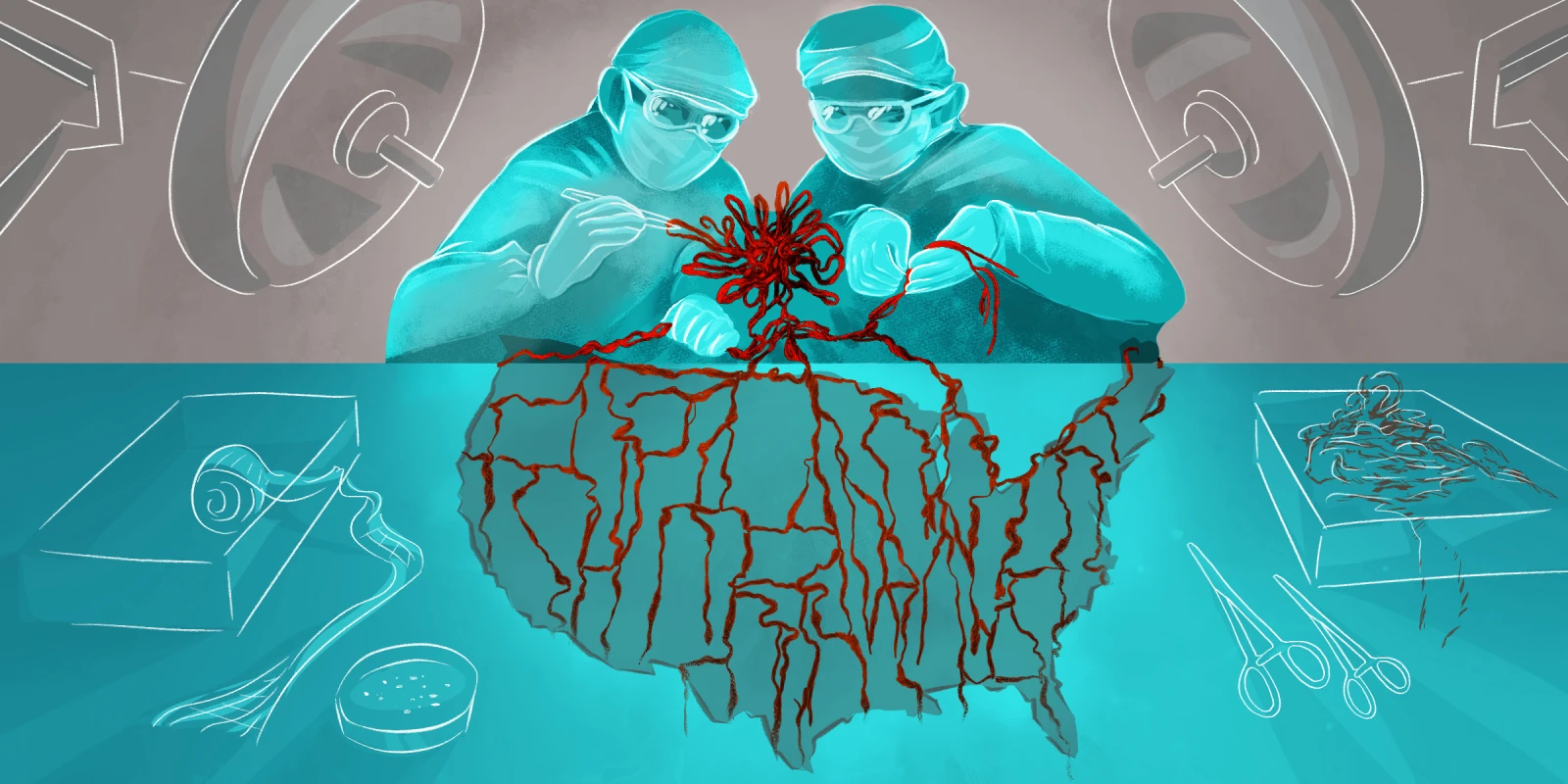After the murders of Breonna Taylor and George Floyd in 2020, a time people have called “America’s Racial Awakening,” I felt incredibly tired, devastated, and oddly … hopeful. Although the senseless loss of life was similar to other countless stories of police brutality and racism, I wanted to believe that the cyclical traumatization of Black people in America would finally be addressed. I decided to put my faith in society and redirected my attention to my medical school responsibilities. At the time, I was a second-year student and the preclinical curriculum combined with the preparation required for the dreaded USMLE exams left little room for minority medical trainees to process the trauma in our communities.
However, once I started my third-year clerkships, it became clear that progress was not occurring fast enough to reconcile the unequal treatment and disproportionate mortality of minority patients, particularly Black patients. Although the injustices of 2020 revitalized social justice conversations and even led medical institutions to consider their role in dismantling racial inequality, the momentum slowly dwindled. Black people are continuing to die at unprecedented rates from preventable causes such as police brutality, the ongoing Black youth suicide crisis, disparities in Black maternal mortality, and unequal access to medical care. As we approach the three year anniversary of the tragic murders of 2020 (while still processing the more recent mass shootings targeting Black and Asian communities and ongoing police brutality), I cannot help but question the progress we in the medical field have made toward addressing racial inequity. Below, I note three ways that we can ensure sustainability, not stagnation, in our efforts to achieve a more equitable health care system for all.
1) Resist complacency by acknowledging that structural racism actually exists.
The COVID-19 pandemic has highlighted the ongoing discrepancies in mortality between Black and white Americans, with Black Americans dying at much higher rates. According to the landmark report “Unequal Treatment” issued by the Institute of Medicine Committee in 2003, the key driving forces behind health care inequity are systemic racism and bias in medicine. Since the report was released 20 years ago, researchers have stated that barely any progress has been made — despite the medical community’s initial shock. Furthermore, the repetitive cycle of collective horror and statements of solidarity in response to racial injustices, followed by stagnation in action, raises the question of whether these issues are being appropriately prioritized in medicine.
Health equity scholars have postulated that part of the reason we are seeing slow advancements toward dismantling structural racism in medicine is that people in the medical field are still hesitant to accept that structural racism is part of the problem, and that they may also be inadvertently contributing. While Americans as a whole have demonstrated the ability to feel empathy in the face of injustices, they also display a resistance to change and to taking responsibility for their role in perpetuating those same injustices. This resistance to change has been present throughout history. For instance, following the passage of the 1964 Civil Rights Act, while many Americans denounced slavery, 68% of Americans voted in favor of moderation in its enforcement with slower implementation and more restrictions. More recently, polling data has revealed that support for Black Lives Matter among Republicans and white Americans has actually decreased since the murder of George Floyd in 2020.
To combat this resistance, I urge medical schools to offer core courses on health disparities, social determinants of health, and racism in medicine. I also urge medical institutions to foster similar discussions, create anti-racism and diversity task forces for accountability, and offer trainings on racism in medicine. These efforts would also help dispel the sense among members of marginalized communities that anti-racism statements issued by medical institutions are largely a performative tactic to maintain approval and avoid backlash from society.
2) Create spaces for minority patients to open up about their mistrust of medicine.
Through grappling with the power dynamics and privilege between my identity as a Black woman and my identity as a soon-to-be physician, I have found it helpful to turn to my patients for guidance. In simply talking to patients and providing them with the space to express their frustrations with the medical system, I have gained a better understanding of how medical trainees and physicians can work toward reconciling years of mistrust.
During a visiting psychiatry fourth-year clerkship, I interviewed a middle-aged African American woman who presented to the hospital for back and hip surgery. Psychiatry was consulted because the patient was feeling anxious and tearful, and was being “aggressive” toward the primary team. At the conclusion of the lengthy and emotionally charged conversation with her, I learned that in addition to her back pain, the patient was dealing with a chronic debilitating medical condition; processing her husband’s recent terminal diagnosis; and coming to terms with the end of her professional dance career as a result of her medical condition. She also expressed that she was feeling confused and frustrated during her hospital stay because she felt she wasn’t being “included” in conversations regarding her care. She went on to say, “They think we are all stupid.” While pointing to the back of her hand, she added, “I think they are treating me differently because of this.”
At that moment it was powerful to be in a space where a patient felt comfortable sharing these feelings. The psychiatry fellow who accompanied me for the interview asked her, “Do you feel more comfortable telling us this because we are all minorities, me being Asian and my colleague being African American?” After a long pause, the patient said, “I guess so, yeah.” Hearing this, the importance of both diversity and open communication became undeniable; I believe a lot of the tension between the patient and the primary team could have been alleviated with more of each.
To that end, I urge health care institutions to encourage open communication between patients and clinicians in order to address misconceptions and rebuild trust. This could be achieved through making diversity and inclusion statements visible throughout the hospital so patients feel empowered to speak up. In addition, medical teams could openly acknowledge power dynamics and name some of the historical barriers to care at the start of a patient encounter. Lastly, I urge institutions to include historically marginalized communities in discussions about change at all levels (administration, clinicians, support staff, social workers, and community members).
3) Increase diversity in the medical field.
Due to ongoing medical discrimination and structural racism, it may be hard for minority patients to willingly share their feelings with their doctors. While studies have shown minority patients tend to do better medically with minority physicians, the percentage of Black physicians in America has remained below 6%, and the number of Black male students enrolling in medical school has stagnated for decades. Diversifying the medical field is a key component in working toward establishing an anti-racist and inclusive health care system.
However, an increased minority presence is not enough: It is also important that all physicians, regardless of race, be culturally competent and confident in their ability to treat a wide range of patient populations. Thus, I believe that in addition to implementing policies that would enable more minority students to enter and succeed in medical school, schools should also offer sensitivity training when it comes to encounters with standardized patients.
While the racial injustices of 2020 and ongoing COVID-19 pandemic re-energized anti-racism efforts across the U.S. and prompted the medical community as a whole to robustly investigate issues of health care disparity, there is still a long way to go to dismantle structural racism within the medical system. Following the steps above will allow us to begin building a health care system that we want to see, one in which institutions are held accountable and progress is never compromised over profits. If we are sincere in our desire to live in a society in which health care is equitable for all, we must continue to work together toward this goal.
What strategies would you like to see implemented in the fight for racial equity in health care? Share in the comments below.
Abiba Salahou is a fourth-year medical student at Oakland University William Beaumont School of Medicine and member of the national Gold Humanism Honor Society. Abiba plans to serve diverse communities as a child and adolescent psychiatrist, and is passionate about restorative social justice, de-stigmatizing mental illness, creative writing, and food blogging. She tweets at @AbibaSalahouMed. Abiba is a 2022–2023 Doximity Op-Med Fellow.
Illustration by April Brust







